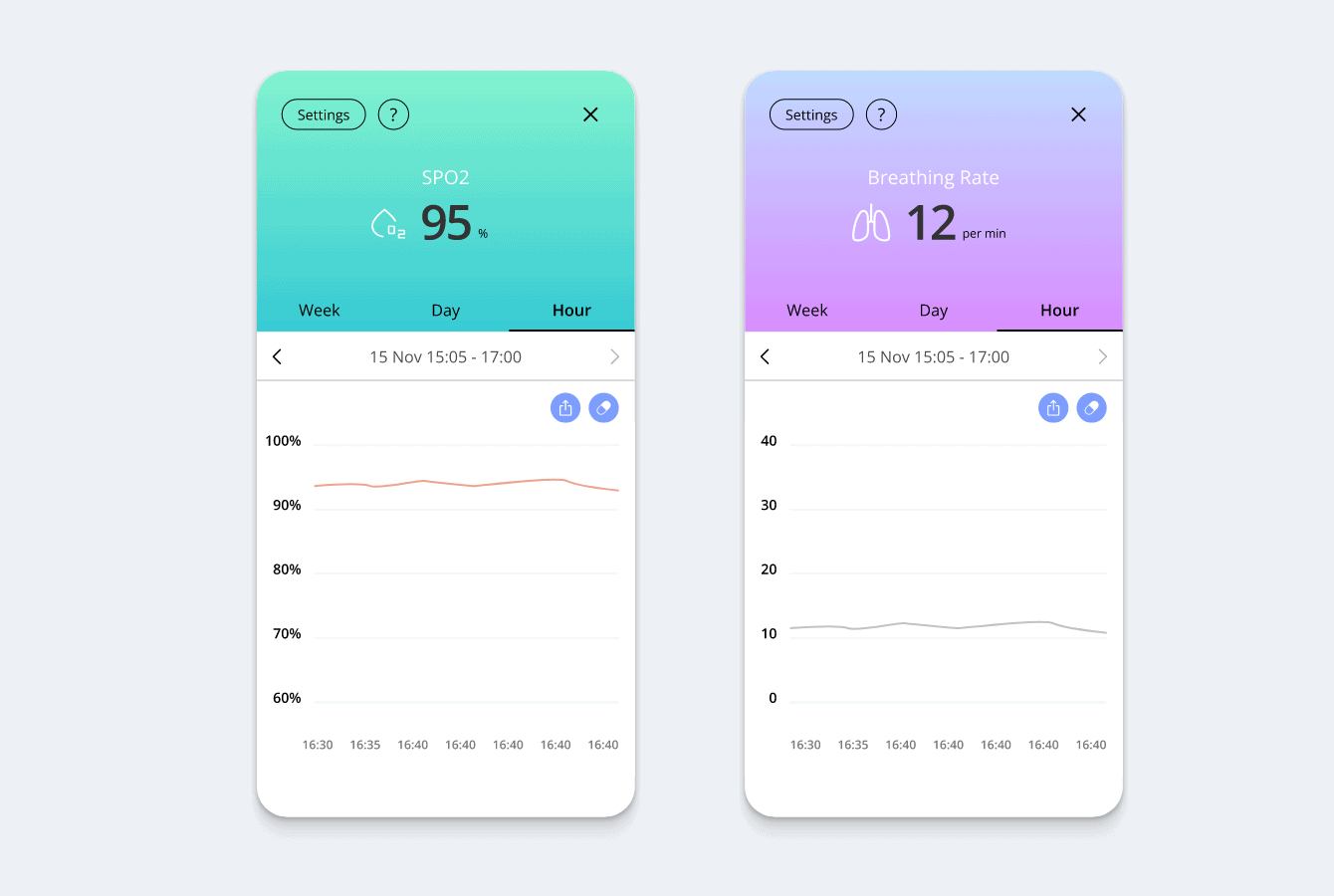According to the data from the American Hospital Association, approximately 74% of patients in the US expressed willingness to utilize telehealth services. Yet, while the need for telehealth becomes more pressing, the cost of telehealth implementation for healthcare providers includes many hidden charges and must be carefully estimated before adoption.
Is your cost for implementing and maintaining telehealth solutions within a reasonable range? And, more importantly, do the benefits outweigh the costs?
If you have doubts, you’ve come to the right place!
In this blog post, we will share our in-depth insights into the cost of telehealth system development. We’ll break down the factors impacting the price, provide a market overview, and explain how the benefits of investing in telemedicine justify the costs.
Why You Should View Telemedicine System As an Opportunity
The telemedicine market was significantly reshaped by COVID-19. Even though we are out of the pandemic, providers are now considering telehealth systems more seriously than ever before, primarily for the reasons below.
Flexible Response to the Pandemic and Future Health Crises
The pandemic has underscored the need for remote healthcare solutions. Telemedicine systems mitigate the risk of virus transmission by reducing physical visits and ensure continued care during such unprecedented crises. In fact, during the height of the pandemic, NYU Langone, located at the heart of the U.S. outbreak, had approximately 7,000 video visits daily. In April alone, they recorded around 100,000 video visits, a stark contrast to the pre-pandemic average of about 300 visits per day.
Enhanced Patient Convenience
Telehealth enables patients to remotely communicate with their healthcare providers, eliminating the necessity for travel and decreasing the time spent waiting. A recent study shows that 83% of patients who engaged in a telemedicine visit in the previous year are willing to keep and increase their use of telemedicine in the future. Additionally, nearly 76% of patients who had a telemedicine visit reported improved access to healthcare services.
Better Access to Care
Telemedicine extends healthcare reach beyond geographical limitations. It enables exchange of information between doctors and patients, improving access to healthcare in rural and underserved areas where quality treatment is scarce. This technology has notably enhanced healthcare quality by making it easier to schedule and attend appointments. Individuals with limited mobility can obtain medical opinions and prescriptions, along with managing medicine, testing, and procedures from their location. Telemedicine reduces the need for extensive travel, positively impacting the lives of patients by ensuring they receive timely and appropriate healthcare treatment.
Increased Cost Savings
Telemedicine brings cost savings to patients and medical organizations by minimizing in-person visits, thus reducing expenses like transportation and facility fees. It improves accessibility for rural patients and lowers hospital readmissions and emergency visits, especially for chronic conditions, through remote monitoring and timely access to care. The scope research shows telehealth reduces costs to the health system in up to 53% of cases, mainly due to optimizing the health system–funded travel and improved care.
Strengthened Continuity of Care
Telemedicine fosters continuity of care by facilitating communication between patients and healthcare providers. It enables remote monitoring of chronic conditions, medication management, and follow-up appointments, ensuring ongoing support and care for patients.
Telehealth also empowers patients to take an active role in their healthcare. It allows them to access medical records, view test results, and engage in shared decision-making with healthcare providers.
It’s evident that telemedicine systems offer more than just a response to immediate crises. They represent a forward-looking solution with multifaceted benefits for both patients and healthcare providers.
How Much Does Telemedicine Cost for Startups Or Small Healthcare Providers
Developing a telemedicine system is a step-by-step process, with each stage carrying its unique set of tasks and costs. Let’s walk through these stages and their corresponding costs:
The Discovery Stage
At this stage you start mapping out your telehealth project. Here, you undertake market research, analyze your target audience, and decide on the essential features of your telehealth system. This stage also includes the initial conceptualization of your system’s user interface and user experience (UI/UX) design. The cost of this stage can vary significantly depending on the project’s complexity, but you can generally expect to spend between $5,000 to $15,000.
The Proof-of-Concept Stage
Next comes the Proof-of-Concept stage. This is when you develop a basic prototype of your telehealth system to validate your idea. It’s a critical step to ensure your concept works as expected before committing more resources. The cost of this stage varies, typically ranging from $20,000 to $50,000, depending on the intricacy of your system.
Development of a Minimum Viable Product (MVP)
The MVP stage is where your telemedicine system starts to take shape. An MVP is a basic version of your product, including only the most crucial features. This stage lets you test the market and gather user feedback for future refinements. The cost of developing an MVP hinges heavily on the chosen features, but you can expect to spend somewhere between $60,000 to $120,000.
Deployment Stage
Deployment involves setting up the production environment, deploying the system on servers or cloud platforms, and configuring it for live use. Depending on the scale and infrastructure requirements, the costs associated with this stage typically range from $10,000 to $30,000.
Licencing and Compliance
Compliance with industry regulations such as HIPAA is crucial for any telehealth system. All licensing requirements of your telehealth system must meet the necessary standards. This stage involves legal fees, compliance audits, and obtaining necessary licenses, with costs typically ranging from $10,000 to $25,000.
Maintenance and Support
Once your telehealth system is operational, the development provider handles ongoing maintenance and technical support. This includes regular system updates, bug fixes, and addressing user queries. The costs for maintenance and support vary depending on the level of service required but generally reach $15,000 to $40,000 annually.
Remember, these are just averages – actual costs may vary significantly based on your specific requirements, the complexity of the project, and the professionals or agencies you decide to work with.
Key Factors That Affect the Cost of Telehealth System Development
Developing a telehealth system involves several components and factors that might significantly influence the overall cost. These factors include:
- Type of Application
Just as the cost of building a bungalow differs from that of a mansion, the cost of developing a telehealth system varies based on whether it’s a mobile app, a web-based platform, or a comprehensive system that includes both. For example, a basic mobile app for virtual consultations might cost between $50,000 to $100,000. In contrast, a fully integrated web and mobile platform with EHR functionality starts from $200,000 and up. - Number and сomplexity of features
Basic features such as user authentication, video conferencing, and appointment scheduling are relatively straightforward and less expensive to implement. However, advanced features like AI-driven diagnostics, real-time health monitoring, and integration with third-party medical devices significantly increase complexity and cost. For instance, adding AI capabilities can add an extra $50,000 to $100,000 to the development budget. - Team composition
The makeup of your development team, including the number of developers, designers, project managers, and others, is crucial in determining the telemedicine platform cost. One of the ways to optimize expenses is outsourcing to Eastern Europe or Asia where engineering rates are lower. This approach is beneficial since it lowers costs and offers access to a broader talent pool and potentially faster development times due to different time zones and extended work time. - Technical level and previous experience of the development team
The proficiency and experience of the team can greatly affect the development time and cost. An experienced team might have higher rates but can deliver a more polished product in a shorter time frame. - Timeline
Faster delivery times can drive up the cost of telemedicine software. Expedited timelines might require additional resources or overtime pay. For instance, accelerating a project timeline from six to three months could increase costs by 30-50%.
Given the various factors at play, the cost of telehealth services implementation can fluctuate greatly. However, based on our experience and industry standards, you can expect to invest anywhere between $100,000 to $250,000 for a robust and comprehensive telehealth system.
Empeek´s teams have years of experience developing telehealth systems. Contact us for a more accurate estimate based on your needs.
Hidden Telemedicine Costs to Mind
The upfront cost of a telemedicine system is often just the tip of the overall expense. The surface hides numerous concealed or supplementary expenses you must consider when devising the budget for your telemedicine startup.
| Medical Device or Feature Integration | Integrating medical devices or additional features into your telemedicine system can incur extra costs. Integrations might include tools for capturing patient vitals or systems for managing EHRs as well as remote diagnostic equipment, wearable health monitors, or video conferencing platforms with advanced medical imaging capabilities. |
| Telemedicine Platform License | When developing a telemedicine system, it’s important to consider licensing fees for additional tools or services utilized during the development process. These licenses may be required to integrate specialized features, access certain APIs, or incorporate third-party services. The costs associated with these licenses can vary depending on the specific tools or services utilized and the terms of the licensing agreements. Therefore, it’s essential to factor in these potential expenses when budgeting for the development of a telemedicine system. |
| Communication Platform and Videoconferencing | Robust, secure, and compliant video conferencing tools are integral to telemedicine. Depending on the provider, these can either be a one-time purchase or require regular subscription payments. |
| Telemedicine Support on Mobile Devices | If you decide to make your telemedicine services accessible on mobile devices, you’ll likely incur additional development and maintenance costs. |
| Staff Training | Your staff needs to be trained to use the new system effectively, and this training and knowledge gained can be additional healthcare costs to factor into your budget. |
| Compliance with Telemedicine Regulatory Requirements | Ensuring your telemedicine system complies with healthcare laws and regulations like HIPAA in the US is vital. Depending on your country and state, meeting these standards could require a significant investment. For detailed guidance on developing a HIPAA-compliant telemedicine platform, you can refer to our comprehensive guide How to Develop a HIPAA-Compliant Telemedicine Platform. |
| Telemedicine Equipment Costs | Don’t forget about the physical infrastructure needed to facilitate telemedicine. This includes high-quality video conferencing tools, specialized medical devices for remote patient monitoring, and potentially even dedicated servers for data storage. These costs can be substantial, especially if you’re aiming to provide a high-quality service. |
Remember, a successful telemedicine startup isn’t just about setting up the software. These additional expenses are essential to the successful operation and growth of your telehealth service. It’s crucial to account for these when planning your overall budget to avoid any unpleasant financial surprises down the line.
So, How Much Does It Cost to Implement Telemedicine?
Understanding the financial implications of implementing telemedicine is crucial for healthcare providers and stakeholders. The telehealth cost breakdown involves various components, each playing a significant role in determining the overall development budget. Here is the overview of the telehealth pricing when establishing a telehealth system:
| Stage | Cost Range |
| Discovery Stage | $5,000 to $15,000 |
| Proof-of-Concept Stage | $20,000 to $50,000 |
| MVP Development | $60,000 to $120,000 |
| Deployment | $10,000 to $30,000 |
| Maintenance and Support | $15,000 to $40,000/annually |
| Licencing and Compliance | $10,000 to $25,000 |
| Full System Development | $100,000 to $250,000 |
Note that these are rough estimates, and the actual costs can fluctuate based on many factors, such as your specific needs, project complexity, the technology used, and the engineering companies you choose to work with. Overall, a telehealth system can range from around $200,000 to $450,000 in total, accounting for development stages and the potential hidden costs.
For more detailed insights on how to develop a telemedicine app, visit our Telemedicine Platform Development guide.
How to Reduce the Cost of Telemedicine Software Implementation
Just as preventative care can save on healthcare costs in the long run, proactive planning can help reduce the cost of implementing telemedicine software. Here are a few strategies to keep your budget under control:
| Invest In Discovery | Mistakes during the development process can lead to costly delays and revisions. One way to minimize these is to invest time and effort in the discovery stage. A thorough understanding of your target market, careful planning of your telemedicine system’s features, and detailed UI/UX design can prevent expensive overhauls down the line. |
| Choose a Quality Development Partner | The right software development partner can make a world of difference in the success of your project. Look for a team with a proven track record in telemedicine software development. They’ll bring invaluable expertise and experience to the table, helping you avoid common pitfalls and get the most out of your budget. |
| Implement in Stages | Instead of developing a full-featured system right off the bat, consider a phased approach. Start with an MVP that includes only your core features, then expand and refine based on user feedback. This not only spreads out your expenses but also reduces the risk of wasting resources on unnecessary or poorly-received features. |
| Invest in Training | Training your staff to use the new system effectively can prevent costly mistakes and inefficiencies once your system is up and running. Although this incurs an upfront telehealth cost, it can save you money in the long run. |
| Stay Up-to-Date with Regulations | Failing to comply with healthcare regulations can lead to hefty fines. Stay abreast of the latest regulatory requirements for telemedicine in your area to avoid unexpected legal costs. |
By being strategic and proactive, you can significantly reduce the cost of implementing your telemedicine system without compromising on its quality or effectiveness.
The Empeek Experience
At Empeek, we have spent years perfecting the art of telemedicine software development. Our expertise spans several projects, each with its unique requirements and challenges. This diverse experience has equipped us with a deep understanding of healthcare regulations, patient privacy, and the technical intricacies of building robust and user-friendly telemedicine systems.
EHR and Telehealth in a Single Platform
We developed a HIPAA-compliant EHR/EMR system for a US-based hospital, replacing their legacy software. This comprehensive solution integrates electronic health records with user-friendly telemedicine capabilities. The patient-focused platform improves treatment workflows, simplifies medical record inputs, and enhances the overall patient experience. Key features include care provider and patient portals, automated HIPAA compliance activities, one-click appointment scheduling, AI-powered data deduplication and reporting, billing and invoicing tools, and medical imaging and lab results notifications.
Wireless Medical Monitoring In Real-time
We designed a real-time medical monitoring system that captures, analyzes, and decodes patients’ vital signs and various psychological parameters. This IoT-based solution allows seamless monitoring and communication between hospitals, medical care providers, and health-conscious individuals. With features such as real-time data sync and instant sharing, personalized surveys, medication reminders, and smart notifications, this wireless medical monitoring system provides a seamless user experience. Additionally, it offers scalable cloud storage for secure data storage and accessibility.Throughout these projects, we have always prioritized collaboration with our clients.

Our team prides itself on our ability to adapt to individual project needs and deliver tailored solutions that truly make a difference. To get a deeper understanding of the work we’ve done, we invite you to explore our case studies.
Conclusion
In this ever-evolving digital era, implementing a telemedicine system is no longer a luxury but a necessity. The cost of developing a telehealth system involves various stages, each with its associated expenses, from the discovery stage to the full system development and potential hidden costs. The telehealth adoption journey, although intricate, can be navigated with careful planning, thorough understanding, and a trustworthy partner.
At Empeek, we are committed to guiding you through this journey, making it as smooth and rewarding as possible. With our extensive experience in telemedicine software development and client-centric approach, we can help turn your vision into a reality, creating a robust and efficient telemedicine system tailored to your needs.
Contact us for a personalized cost estimate and consulting.






